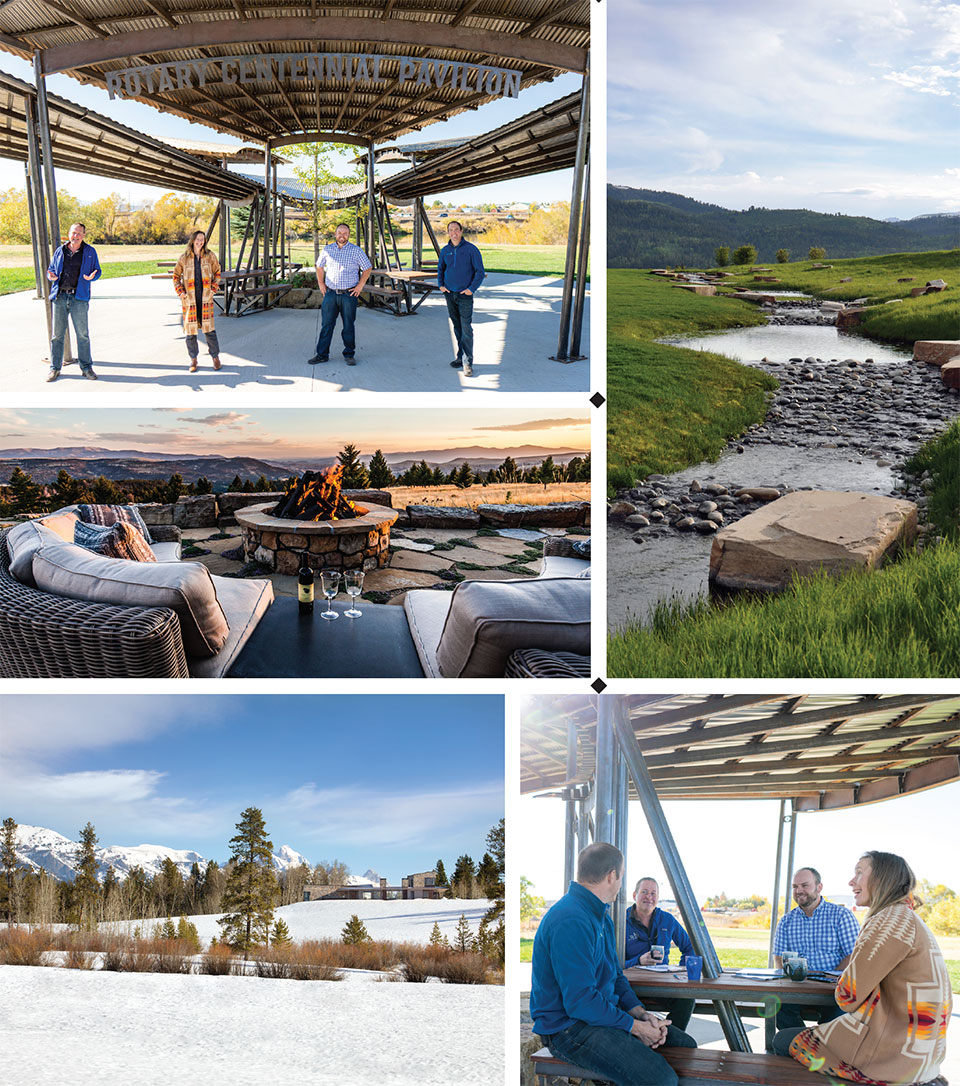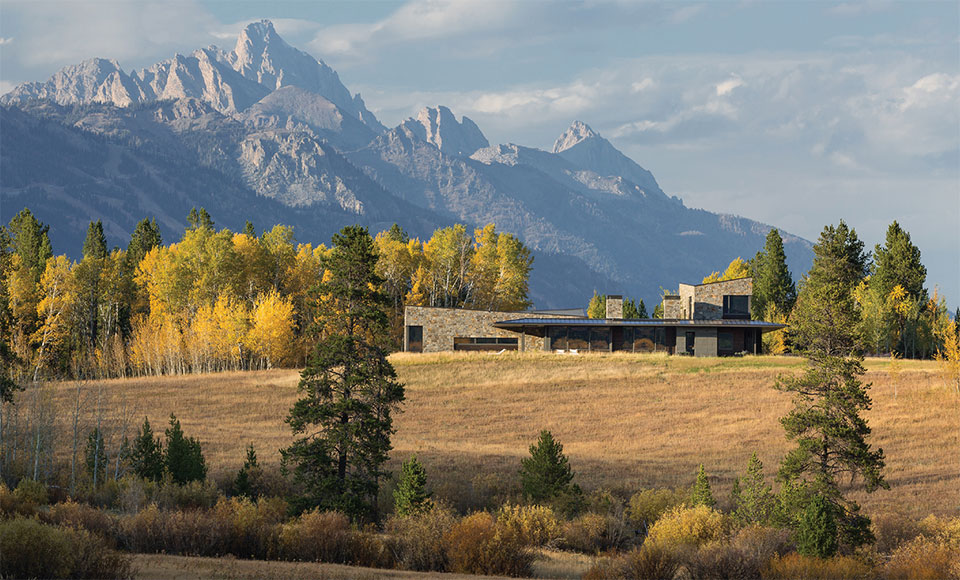Moderated & edited by Aaron Kampfe
Location photography by Kene Sperry
In the vast spaces of the American West, a diversity of landscapes speaks to the human soul. Nature’s grandeur beckons us to interact with the environment and experience wilderness without the influence of human manipulation. The undeveloped and untamed is valued.
Over the past 200 years, as Western civilization advanced and settled west of the Mississippi, each generation has faced the same question—what to preserve and what to develop? Today, in resort areas in the northern Rockies, the balance between preserving the environment that attracts us to these locations and creating livable spaces and “civilization” is a constant battle.
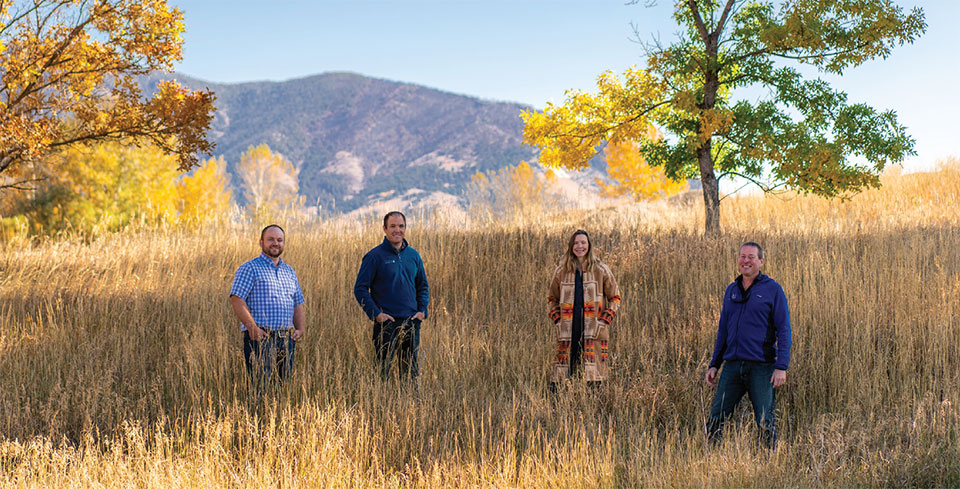
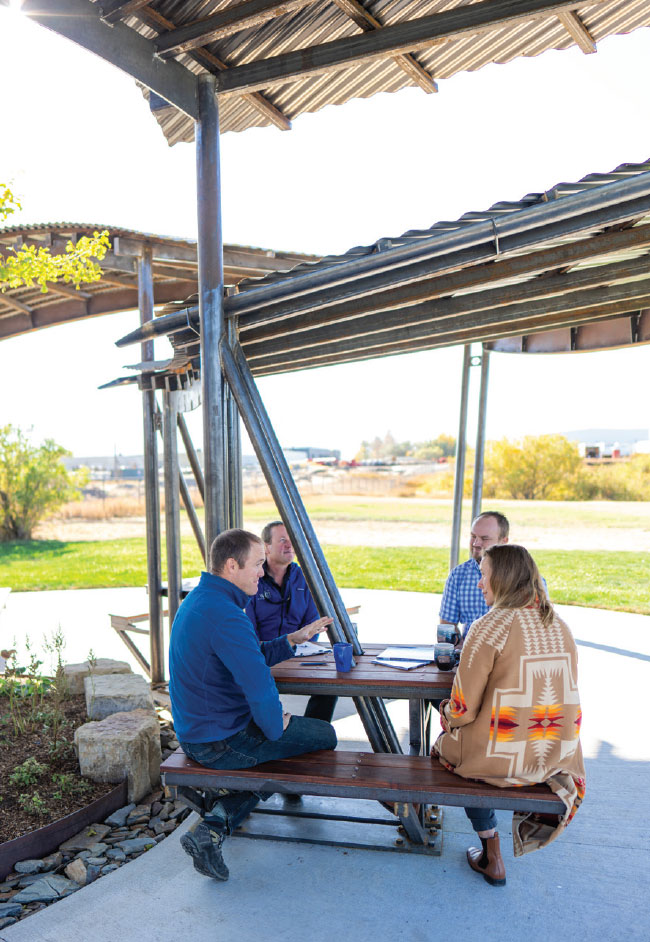
Architects, landscape architects and designers, and landscape installers are often at the center of these competing influences. Beyond just “what to develop,” the question is “how to develop?”
In the fall of 2020, Western Home Journal hosted four professionals for a panel discussion on the role of landscape in architecture, design, and construction in the Intermountain West region. Allison Bryan, creative director and architect with CLB; Case Brown, an aquatic specialist with Clearwater Restoration; Chase Gouley, a landscape architect with BYLA Landscape Architects; and Mason Shaffer, a garden designer with Blanchford Landscape Group met in Bozeman at Glen Lake Rotary Park to share their expertise, insights, and personal approaches.
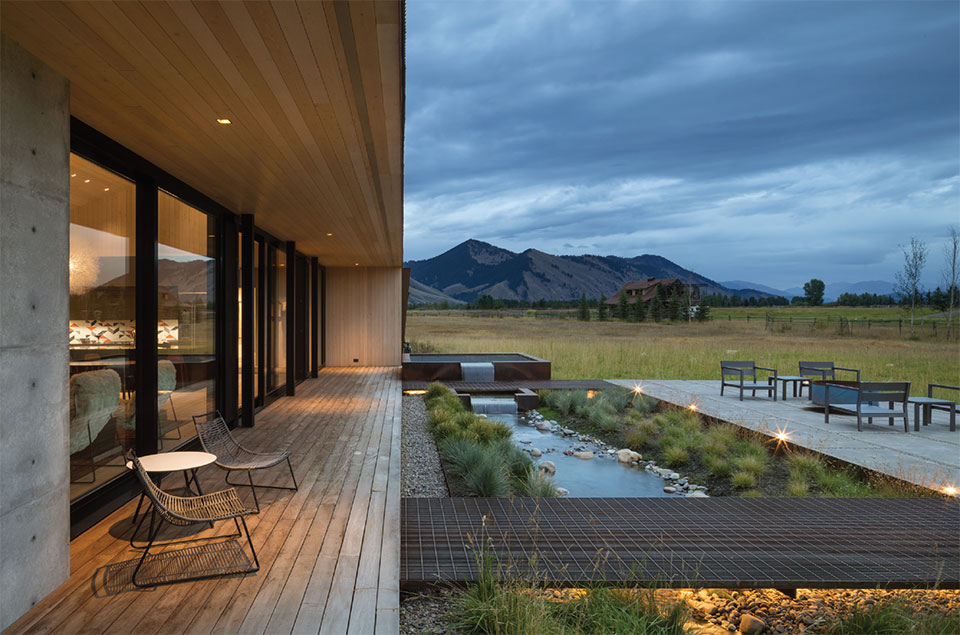
whj: Discuss the challenges of blending architecture with the landscape.
Allison Bryan (CLB): These challenges are always at the core of our work and where our process begins. Our architecture is created with consideration of the natural environment. CLB’s tagline is “Inspired by Place.” We don’t want to harm the places and the landscapes that inspire us; we want to respect and enhance these landscapes.
Case Brown (Clearwater Restoration): The challenge is to use the exterior space as a continuation of the built space. The delineation of indoor and outdoor is blurred. Many people who gravitate to the West and build homes value the land—any size parcel, from a smaller lot in a development to a sprawling ranch. The physical structure should complement and blend into the environment.
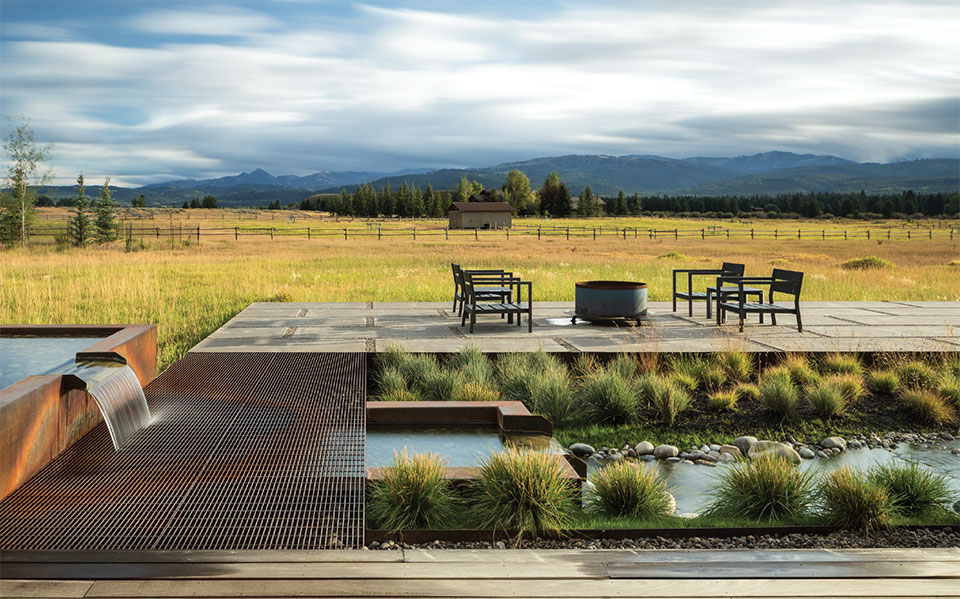
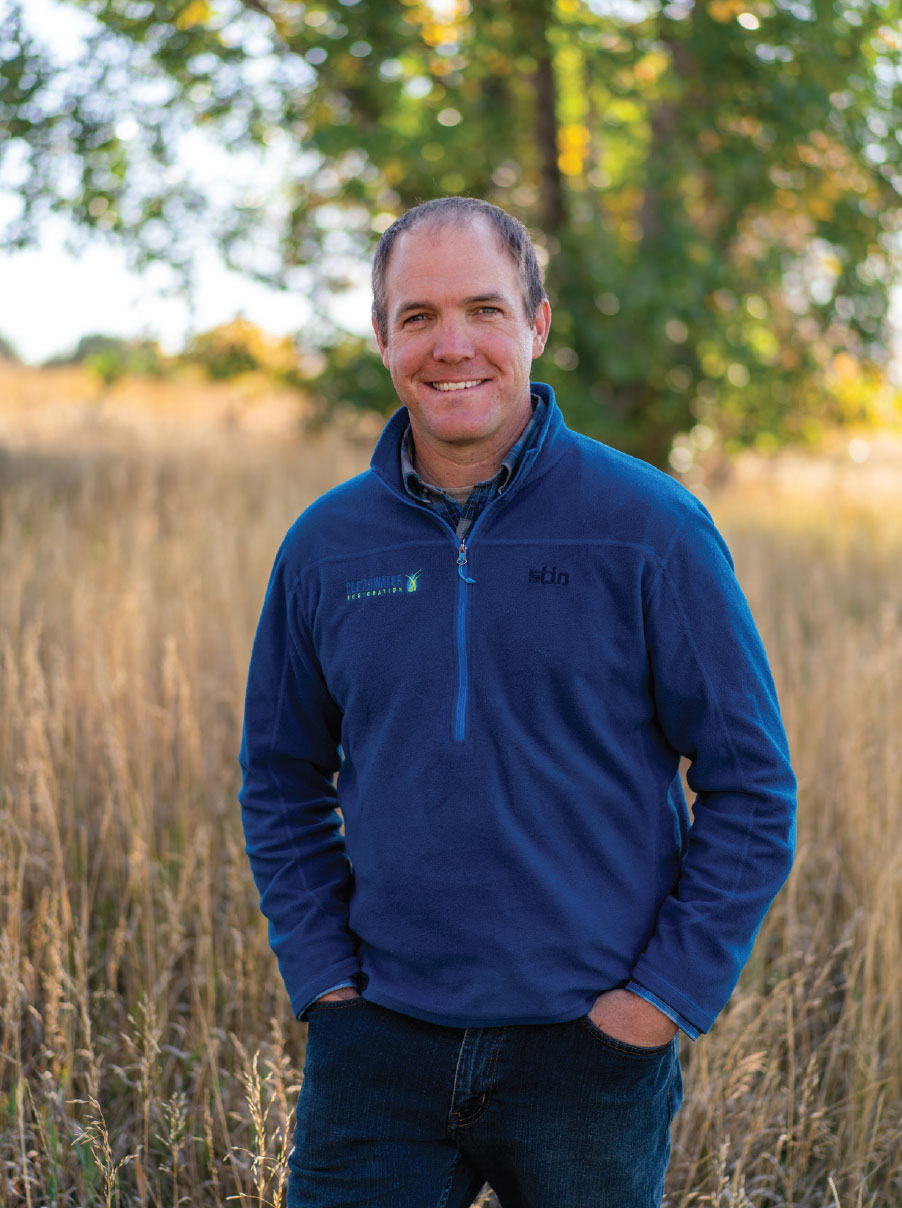
Chase Gouley (BYLA Landscape Architects): Across the West, the environmental conscientiousness of how land is developed has varied over time. We’ve all seen a project where the landscape was an afterthought or pieced together at the bitter end. This example is challenging, as it creates a disconnect between the architecture and landscape. Fortunately, more and more as landscape architects, we’re at the table from the beginning of the design process to collaborate with the team and think about the landscape on both a macro and a micro level.
Mason Shaffer (Blanchford Landscape Group): We draw from the architecture of the home and push those elements into the landscape. We have done many projects wherein we design around the broader landscape of the site. In the end, we really try to blend the home to the site through the landscape we create. Most people move and live here for the beautiful natural landscape and we celebrate it for what it is and try not to manipulate it too much.
“We try to recreate all the natural elements, to create a functioning aquatic environment. It takes time and stewardship to ensure success long-term”
–Case Brown, Aquatic Specialist, Clearwater Restoration
whj: When should a landscape architect or designer be brought into a project?
Mason: As early as possible. Some of our favorite projects are when real estate agents connect us with their clients during the property buying process. This allows us the opportunity to give voice to the landscape and create an initial vision even before it has been purchased. That said, we can deliver value at any stage of the project from property selection, siting the home, site management prior to and during home construction, landscape renovation, etc…
Chase: We like to be involved in a project from the beginning. This could be as soon as the land is being purchased or during the first round of architectural concepts. We strongly feel that we’re much more successful as a team versus individuals with separate visions. Together, we can discuss many questions: How does this home sit? How does it live on the property? What kind of challenges does the site present? We go through a series of exercises as a team that often lead up to the final staking of the house on the site. This team approach is critical for us to ensure the house has the right placement.
Allison: I agree one hundred percent. For our process as an architectural firm, it is extremely important to engage the landscape architect at the onset of the project. Spending time on the land with the entire team facilitates not only the vision for the structure, but also the vision for the structure in its context—its proper siting. We ask the question, “How can we be respectful to the land?” We strive to create structures that are of the place… as if they’ve been there forever.
Case: Our company specializes in the intersection of land, structures, and water. If it touches the water, we’ll do it. Usually it’s good for us to be brought into a project early because restoration work takes time to establish. When we do get everyone together from the get-go, it is amazing how the final project turns out.
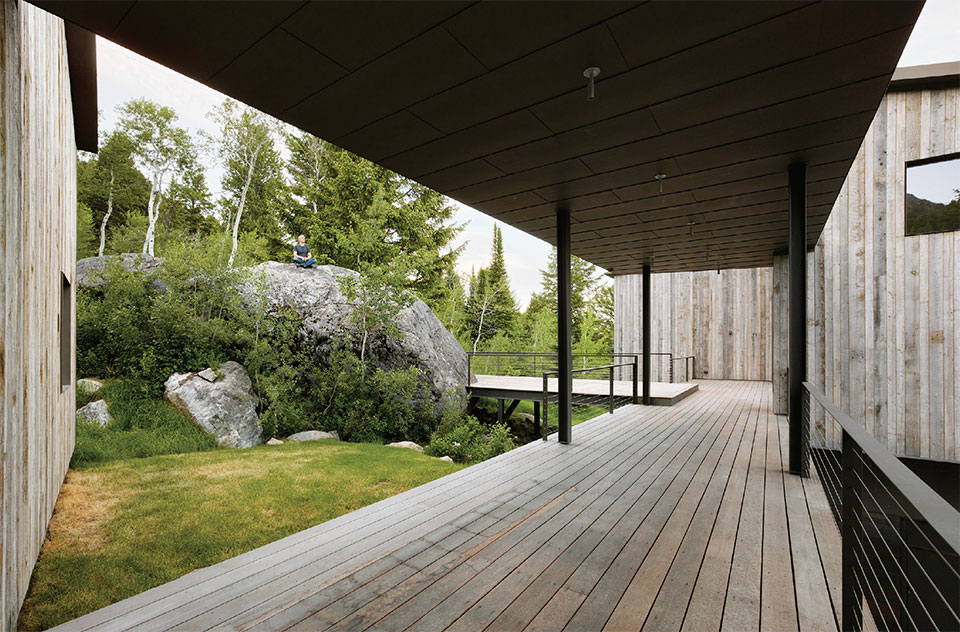
whj: What are some of the specific challenges of designing for landscapes in the Mountain West?
Chase: Part of our job is to educate the client. Whether it’s Ketchum and the Wood River Valley, Big Sky and the Gallatin Valley, or the Teton region around Jackson, the topography and climate vary greatly. Within a few miles, the landscape can quickly change from dry and arid to wooded and wet. Each of these environments requires a different type of thought and planning process. One size doesn’t fit all.
Case: Sometimes people don’t think they need a landscape designer. While many of our clients have built homes before, they don’t understand the uniqueness of our environment in our part of the West and all its micro-climates.
For example, we had a client who wanted spruce trees but the lot was lowland and desert-y. We had to manage expectation in terms of what would grow and what wouldn’t. We provided him with alternative riparian trees and shrubbery that was conducive to his parcel.
Mason: In the broadest sense, we take our cues from nature and the immediate ecosystem of the site. In the lower elevations of Big Sky—around Town Center and the Meadow—the climate and soils are dramatically different than those up near Mountain Village or in the Yellowstone Club, only a few miles away. In the high-alpine landscapes of Big Sky, we won’t introduce exotic species; they simply don’t fit the place (nor do they grow well). We prefer to install smaller trees and allow them to adapt to the harsh conditions. Along the rivers like the Gallatin, we focus on the water as it is the dominant feature for a homeowner and the main amenity. In the “urban” neighborhoods like Bozeman, we focus on creating great outdoor rooms and bringing nature into the built environment.
Allison: Weather patterns vary greatly in different regions, and must be considered in both the architecture and site planning. For example, structures have to take into account snow loads, insulation, the building envelope, etc. For use of outdoor space, and particularly after the snow melts, the landscape design and planning are as important as the architecture.
Case: In our region, it can be years before a restoration project grows in and settles. What will it look like in five, ten, or even fifty years? We strive for a sustainable design—organic and natural—but we stress that it could be years after the house is completed that the landscape becomes what is planned.
“We strive to create structures that are of the place… as if they’ve been there forever.”
–Allison Bryan, Creative Director/Architect, CLB
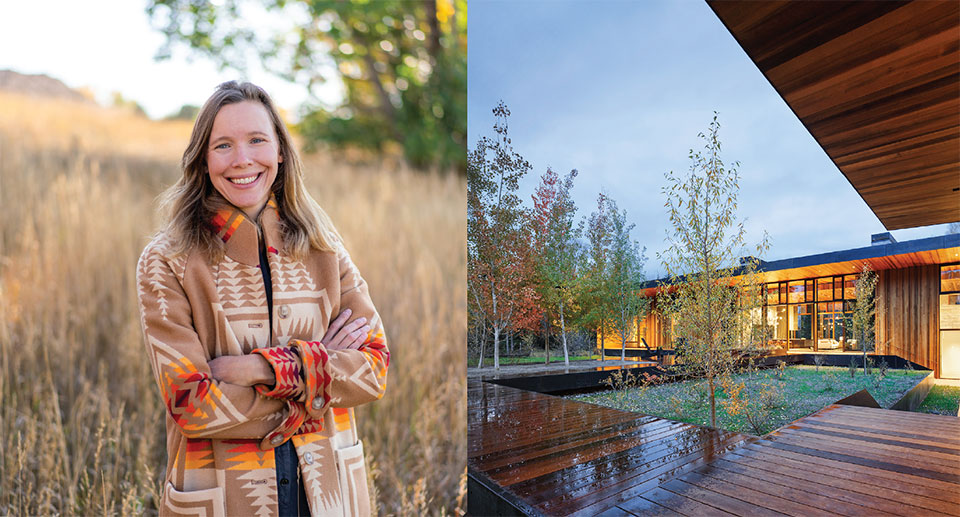
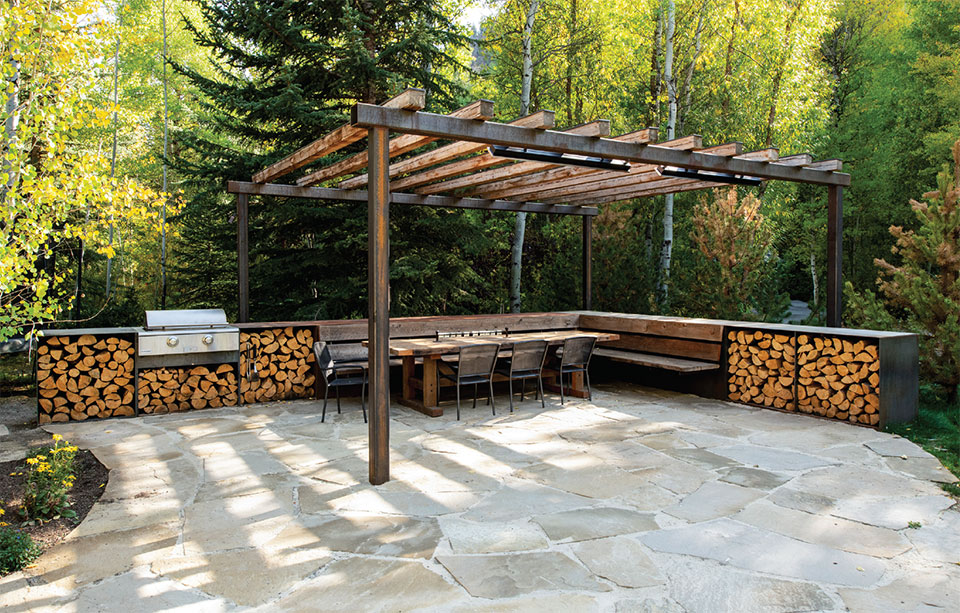
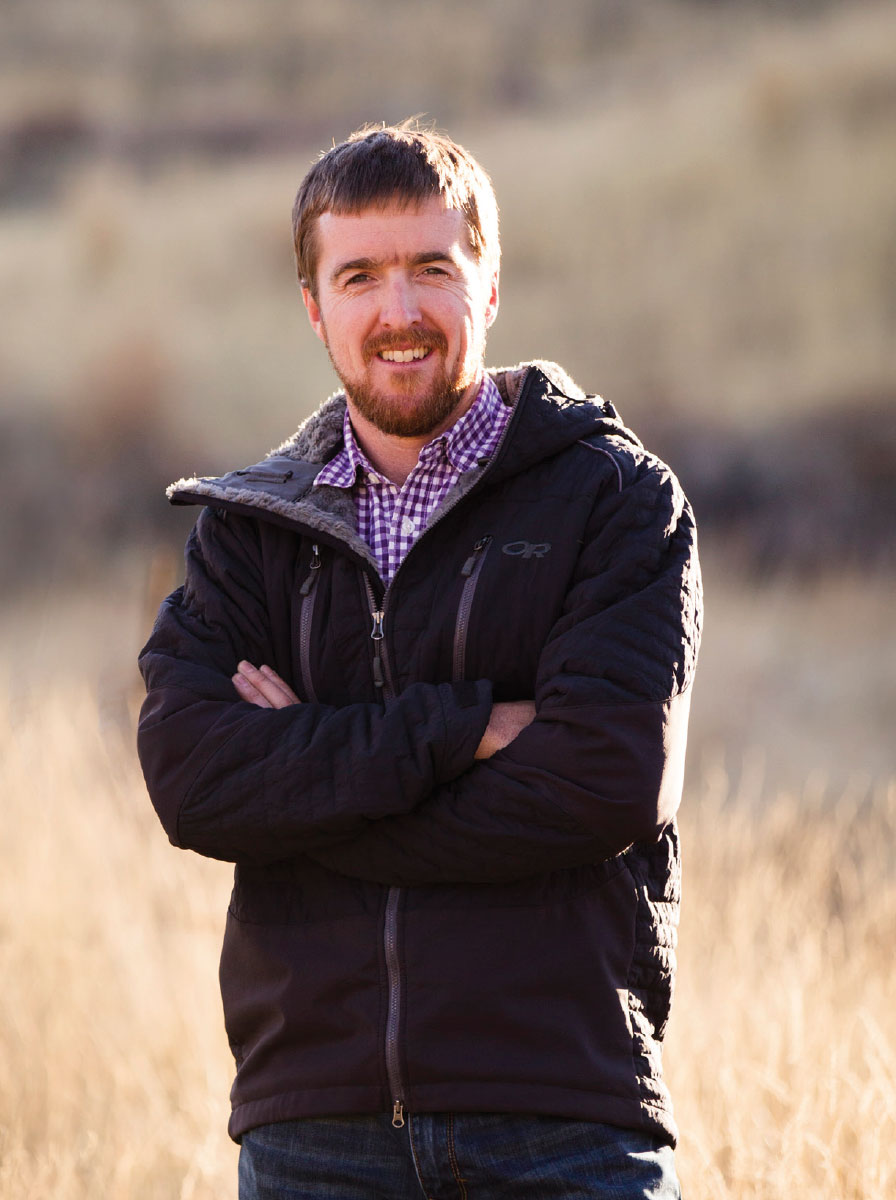
whj: Share with us your professional background as well as your personal passions for your work.
Allison: I’m the creative director at CLB and work out of the Bozeman studio. I worked for CLB in Jackson years ago, then moved to Portland where I worked for Nike and founded my own design firm. I have a master’s degree in architecture but also a degree in graphic design — my roles extend from architecture into brand and interior architecture. CLB thinks outside the box and takes a multidisciplinary approach. Most recently, we’ve brought “branding” into the fold, allowing for holistic design solutions.
Mason: For the past ten years I’ve worked with Blanchford Landscape Group in Bozeman. I have a B.S. in Ornamental Horticulture and an M.S. in Landscape Architecture from Washington State. During my graduate studies, we focused on the landscapes of the northern Rocky Mountain bio-region. I believe in the design-build process as the best means to realize the creation of an authentic outdoor living experience. I am motivated by the “two creations” of the garden. The first, conceptual creation, is achieved through our design process and the second, physical creation, is produced through our construction process. The marriage of these two processes helps us deliver value to our clients while achieving the best possible results.
I work closely with Andy Blanchford, the company’s owner. Our skill sets pair well. Andy, who has a degree in Landscape Contracting from Penn State, founded the company in 1997. Blanchford Landscape Group has grown to a diverse team of 30 talented professionals focused on creating and caring for exceptional outdoor living spaces.
Chase: I was born and raised in Idaho and attended college at Montana State in Bozeman. I’m a principal and an owner at BYLA Landscape Architects, based in Ketchum, Idaho. I work mainly on high-end residential projects with a small emphasis on development opportunities. While our projects have been scattered across the country—from Connecticut to California—most of our work has been in the Intermountain West.
I enjoy thinking outside of the box, bringing built forms to the landscape, collaborating with the architects and the whole team, and blurring the lines between architecture and landscape architecture. A successful project is when you don’t see a clear delineation between the house and the landscape.
Case: I’m a Montana State University graduate. My company, Clearwater Restoration, focuses on aquatic environments. We work on ponds, stream channel restoration, wetlands enhancement, and water features. While we have done projects around the country, our work is primarily in the Jackson and Bozeman areas. We take design build seriously with Ph.D biologist and equipment operators on staff.
We strive to make each of our projects look like it has been a part of the landscape forever. We’ve had people ask our clients, “How did you get this beautiful lot with this pond or stream?” When in fact it wasn’t there a year ago. That is a measure of our success.
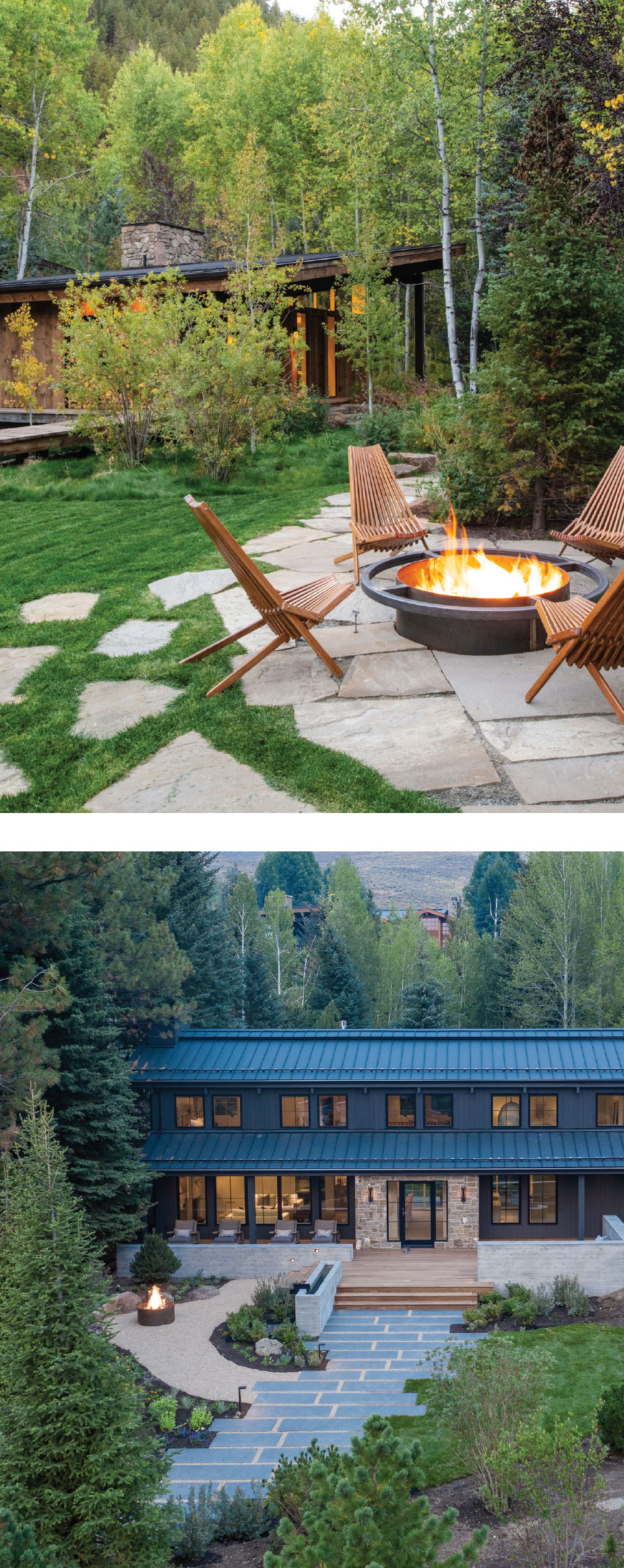
“In a sense, we create outdoor art. In some locations, the space is intentionally organized, balanced, and manicured. In other spaces, we mask our work to make it seem wild.”
–Chase Gouley, Landscape Architect, BYLA Landscape Architects
whj: Share with us a specific project and its challenges and successes.
Mason: We have a project in the Paradise Valley, near Emmigrant, Montana. The site is flat, even though it is at the top of a knoll, and looks back at the valley and toward Yellowstone National Park. The owners fell in love with the land. It’s amazing. The builder took the liberty of using any possible part of the site for their construction process. This is a challenge we run into a lot. There is so much value in keeping the natural landscape intact and not disturbing it and in turn it can become quite expensive to try to replicate what was already there. The client decided to reclaim it. Reclamation takes a lot of effort and ongoing maintenance just to make it feel like it fit the original landscape. We cannot re-create nature. We can repair it and let it heal, much like you would treat a wound. Being at the top of a mountain, the well couldn’t support the hydration needs of the landscape, so we developed a system of cisterns and irrigation. We’re five years in and it finally feels like the property is in a healthy reclaimed state. We understand the need for some disturbance during the home construction process, but we are in favor of limiting the disturbance as much as possible.
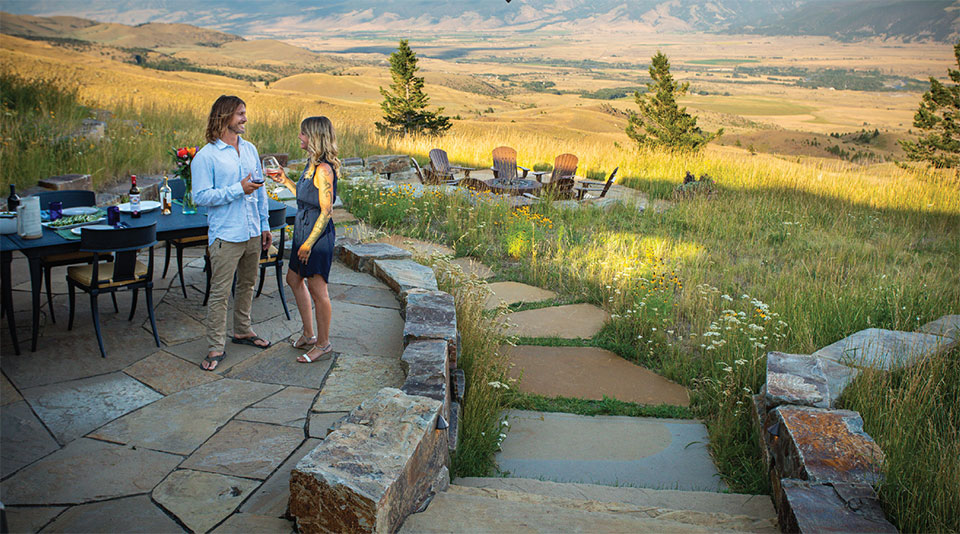
Chase: Projects are most successful when we ask, “What does the land allow for?” This is super important to stress to the client. You have to be careful to not over-design. For example, hillsides can be very challenging. Maybe you don’t overplant it. Perhaps you bring in two or three species, and that’s it. Depending on the specific location, this type of minimal planting will allow the architecture to showcase itself while blending into its surroundings.
Allison: The first project I worked on at CLB was the Boulder Retreat. The client came to us wanting to remove an enormous boulder on the property—we looked at removing the boulder, but we also proposed a diagram that embraced the boulder in the landscape, and made it the centerpiece of the design. The client ended up loving the idea and we were able to leave the land feeling untouched.
Case: One of our favorite projects was located at the top of the Yellowstone Club and included two separate water features and lined ponds. Water use and biological function were the challenges at this altitude, with every drop accounted for with flow meters. We were able to build the water features and streams to blend into the native landscaping. When spring came around, the client was thrilled to see fish spawning in the recirculation stream. Managing the biology of a system becomes the long-term goal of any of our projects.
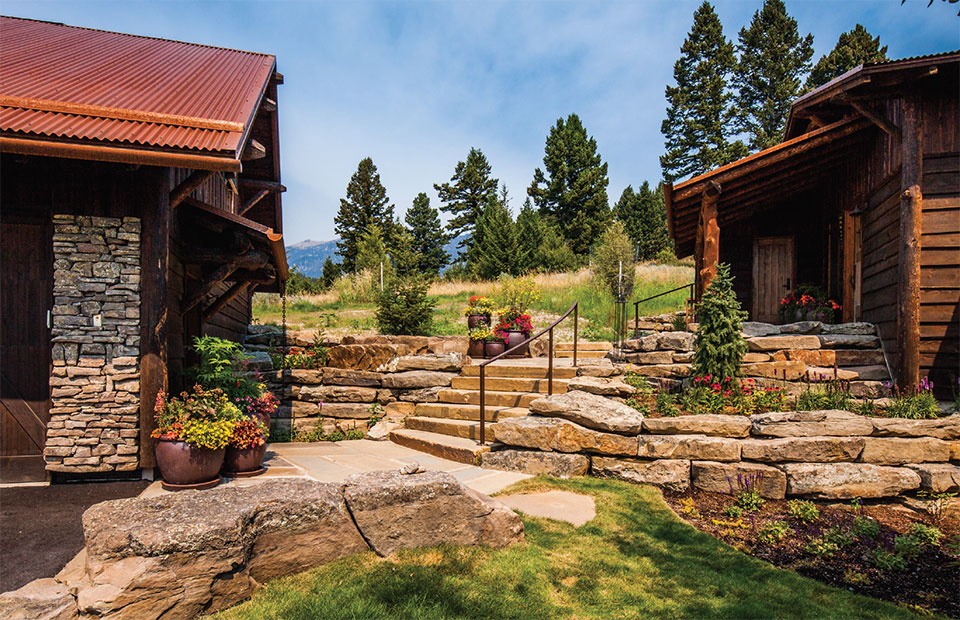
Mason: We built a large landscape for a client in Virginia City who had built a large Italian villa. He wanted an authentic Italian feel in the dry foothills of the Tobacco Root Mountains. We worked closely with a landscape architect who has extensive travel experience in Europe. The ranch manager, a handful of trade contractors, and some specialty vendors completed the team. The budget was about half of what it needed to be, so it took careful planning and communication to keep the project on track. In the end, the varied perspectives and contributors helped us deliver the vision much more effectively than we could have on our own. During the process, the owner came to see the value of increasing the budget and the long-term return on investment. We continue to maintain the property, have won national awards for it, and it gets better every year as things grow and evolve.
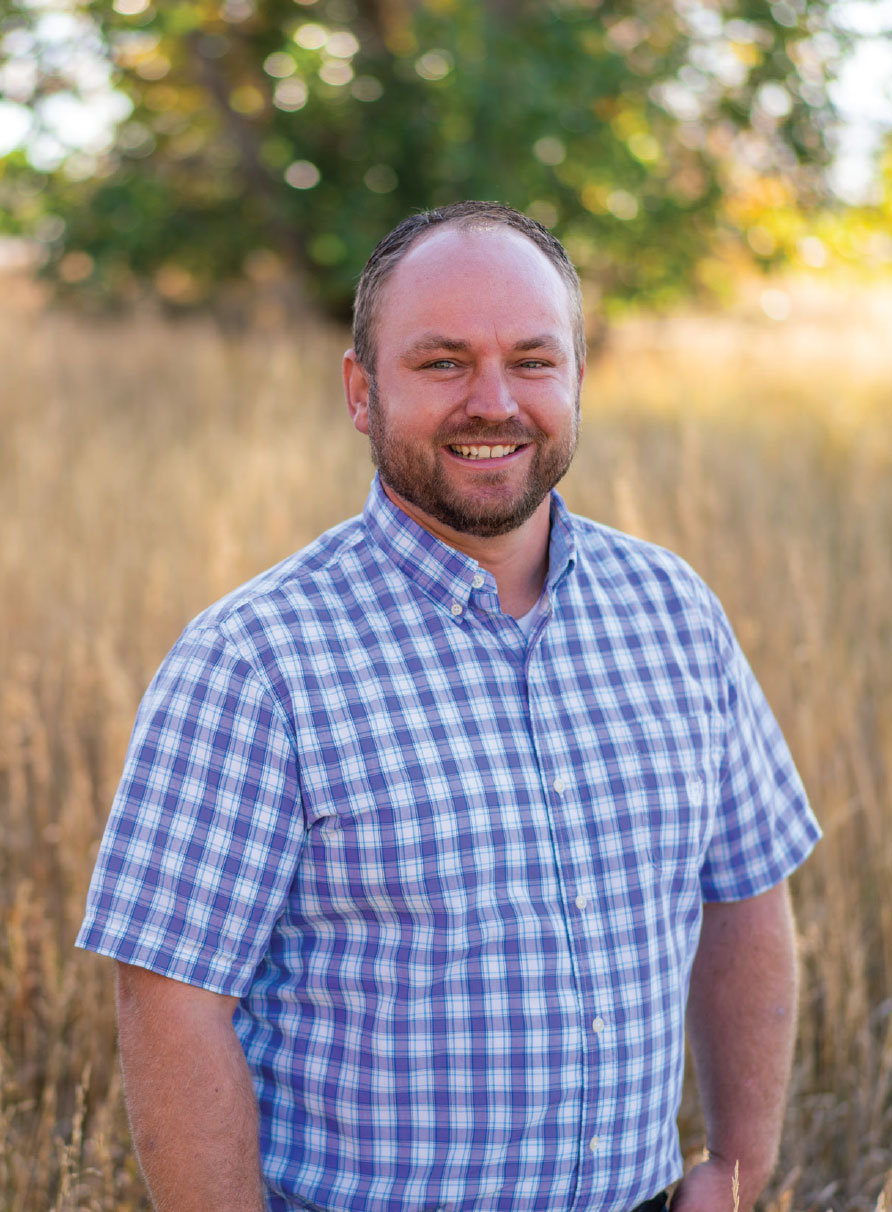
“The intersection of the client needs, the architectural style of the home, and the specific site dictate what we do. When these three influences are equally applied, the best solutions show up.”
–Mason Shaffer, Garden Designer, Blanchford Landscape Group
whj: What considerations do you make about wildlife in landscape planning and design?
Mason: One important consideration is not creating a salad bar for wildlife. It’s rarely good for the animals or the land. If you’re introducing non-native or non-local food sources, nature and the food chain is being disrupted. We work with nature as much as we can and consider the natural vegetation. Essentially, we strive for the right plant in the right place. We also want to design landscapes that allow wildlife to “use” the space without causing damage. For example, a large, pristine lawn in an elk or moose habitat will likely create disappointment when the wildlife leave deep hoof prints and “ruin” the lawn. By planting a native meadow instead, we can create a landscape that fosters joy and wonder when the clients see wildlife rather than frustration that their investment in their landscape is being damaged.
Chase: We pay close attention to any plants that may harm or be toxic to wildlife. Some certain evergreens and perennials can make elk and deer extremely sick, even kill them. Educating our clientele to elk- and deer-friendly plant material is an integral part of our design process.
Mason: Whitetail deer are territorial and will ‘camp out’ in a location. Mule deer are browsers and will wander through. We’ve learned to design landscapes to work with the different deer populations. Some deer are more “ferocious” than others.
Case: Being responsible for water use and development, we have to consider all the life it impacts. For example, in Jackson, moose and elk get into ponds and water features causing damage to liners and potential problems with thin ice. Also, the water that may flow out of a property needs to be of a high quality so as not to impact the native fish populations or downstream users. Our work always takes wildlife into consideration.
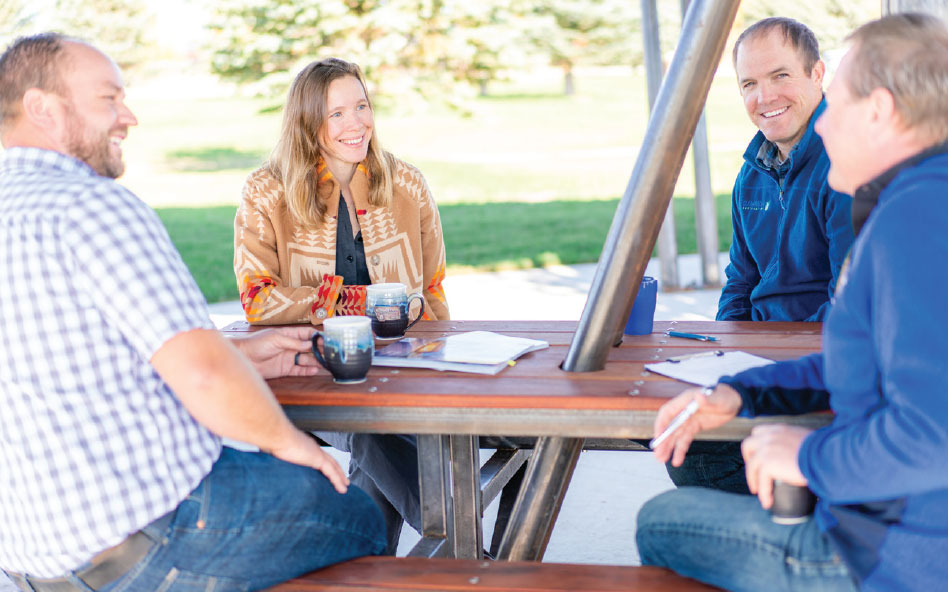
whj: Contrast intentionally leaving it “wild” versus “manicured”?
Mason: The intersection of the client needs, the architectural style of the home, and the specific site dictate what we do. When these three influences are equally applied, the best solutions show up. The “wild” look is appropriate in natural places and less appropriate in urban environments. Manicured areas ought to be closer to the buildings and fade to more natural features as you move away from the built environment. There is an order to nature. Tossing plants or boulders randomly around a site is not natural. For example, the trees would be located in a protected draw where there is some natural water, as opposed to an exposed windy bluff with soils that don’t hold water.
Chase: In a sense, we create outdoor art. In some locations, the space is intentionally organized, balanced, and manicured. In other spaces, we mask our work to make it seem wild.
Mason: In the West, the natural landscape is the primary amenity, so we want our designs to celebrate that rather than compete with it. We can create complementary features that help us enjoy the natural landscape more, such as a firepit that allows us to spend more time outside or trees that frame an exceptional mountain view. We want to avoid creating features that compete with nature.
whj: How do human relationships and dynamics affect your work with nature?
Allison: The client relationship is key; it’s like entering a marriage—you all have to become a unified team. When the team works together, it creates a wonderful synergy—I have really long-lasting friendships from projects. We strive to create an awareness for our clients and challenge their assumptions. It makes more interesting architectural design and rewarding human interaction.
Mason: There can be a sense of loss when a project is over because you no longer need that frequent interaction with individuals on that team. But you can go back several years later and see how things have grown. We offer maintenance so we can monitor the design intent but also, as a bonus, we get to see our clients regularly. It allows us to build deep relationships, and learn from our mistakes when necessary. Some of these relationships go back more than 20 years.
Case: I like the educational part of our business. We are dealing with so much biology and sharing this with clients is ongoing. As a project evolves over time, we can go back and make adjustments. Nature is ever-evolving. You can say, ‘that really worked’ or ‘let’s go back and re-design.’ We manage the expectations and stress patience. We can come back a year, three years, or sometimes ten years later, and sit down with the client and re-evaluate.
